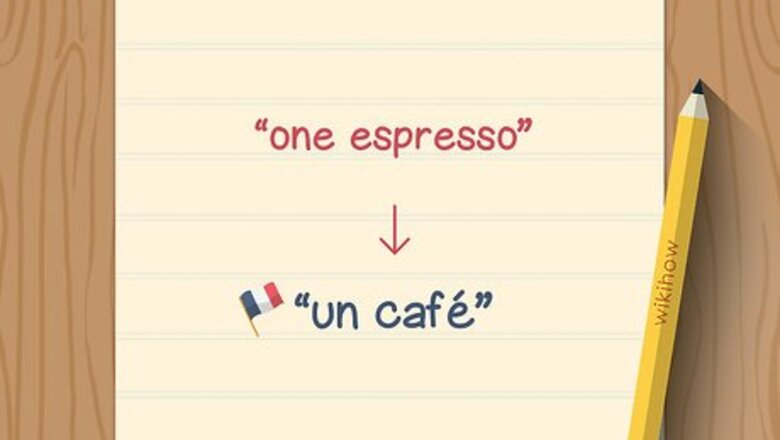
views
X
Research source
- Ask for “un café” if you want to order an espresso, which is an extremely popular form of coffee in France.
- If you want traditional filtered coffee, ask for “un allongé.”
- For decaf, mention that you prefer “déca;” for an iced coffee, ask for “café glacé.”
- For a full order, put “bonjour” in the front to say “hello” and finish your order with “s'il vous plait” to say “please.”
Choosing the Right Coffee

Ask for un café only if you want espresso. You may have learned that café means "coffee" in French, but coffee in France is espresso. It's not quite as small as an Italian espresso, but it's equally dark and bitter. There are variations as well. Une noisette is the French version of the Italian macchiato or the Spanish cortado. It's a shot of espresso with a slight splash of hot milk. Noisette is the French word for "hazelnut." The name comes from the fact that the milk turns the drink a hazelnut color – it does not taste like hazelnut.
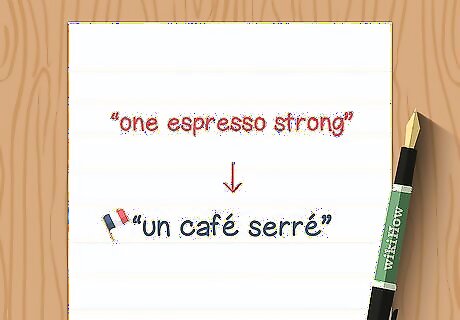
Order un café serré if un café isn't strong enough for you. A café serré is the rough equivalent of an Italian ristretto. This drink is an espresso pulled short, so it's made with half the water of a normal cup of espresso. Since a French café has a bit more water than an Italian espresso, un café serré comes closer to the espresso you're probably used to.

Try a café crème if you think you want a café au lait. Despite the fact that café au lait is French, the French version of this drink is not the same as the drink you may be used to. A café crème is a large mug of steamed milk with a shot of espresso added. This drink has far more milk than coffee, so it's not as strong as a latte. If you want it stronger, order a petit café crème. You'll get a smaller amount of milk with the same single shot of espresso. If you typically drink coffee with milk, this is likely the drink you want. Some French cafés have cappuccinos or lattes, but they generally taste the same as a café crème. And since they're usually only on the menu because tourists order them, you can expect them to cost more. If you order a café au lait, the server or barista will likely understand what you want, but you'll sound touristy.Tip: You won't typically find soy milk or other non-dairy equivalents in French cafés. Likewise, they typically don't carry any milk other than whole milk.
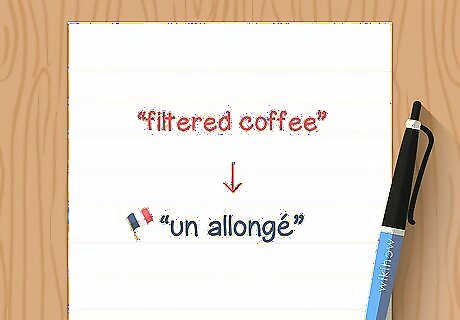
Go with un allongé if you want something similar to filtered coffee. If you're used to regular filtered coffee rather than espresso, this may be your best bet. It is a shot of espresso pulled long so that it has twice the water as a regular espresso would. It's still stronger than most filtered coffee, but not nearly as strong as espresso. If you're looking for actual filtered coffee, you may have a hard time finding it in France unless you're in a touristy area. Ask for a café filtré or a café Americana. Typically, you'll still get un allongé. You can also ask for a café Americano and the barista or server will likely know what you want, even though "Americano" is Italian. Keep in mind when you finish your cup, it won't be refilled. You'll have to order another cup.
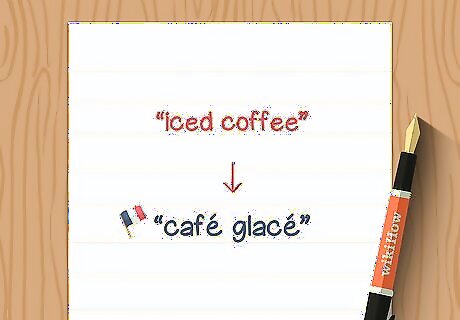
Ask for a café glacé if you want iced coffee. Iced coffee is not extremely common in French cafés, although you might be able to find it in specialty shops. Generally, if it isn't specifically on the menu, you can expect to get hot coffee with a few ice cubes thrown in. Iced coffee is typically brewed at double-strength and then cooled before serving, so the ice doesn't water down the coffee. However, since French coffee is a lot stronger than American filtered coffee, hot coffee watered down with melting ice might not taste so terrible to you.
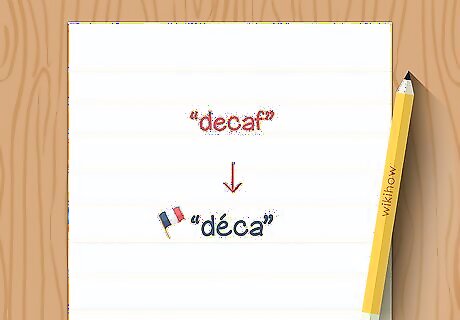
Add déca to the name of the drink if you want decaf. Déca is short for décaféiné. If you want un café, you can simply say un decá instead – you don't have to repeat the word café. For any other drink, say the word déca after the name of the drink. It typically doesn't go before the name of the drink, as it would in English. For example, if you want a decaf iced coffee, you might say "Bonjour. Je voudrais un café glacé déca, s'il vous plaît."
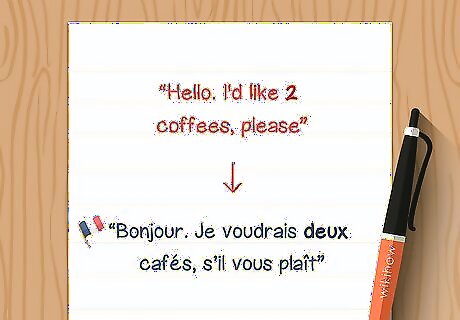
Include numbers if you're ordering multiple drinks. If you're traveling with friends or family, you may end up ordering drinks for the whole group – especially if you're the only one among you who speaks any French. For a single coffee, you would simply use the article un (similar to saying "a coffee" in English) rather than using the number. For 2 or more drinks, however, you'll want to say the number you want before the name of the drink. For example, if you go to the bar to order to coffees for yourself and your friend, you might say "Bonjour. Je voudrais deux cafés, s'il vous plaît" (Hello. I'd like 2 coffees, please).
Placing Your Order

Say bonjour before ordering. It's common practice to say "hello" to anyone the first time you speak to them. This holds true for waiters or baristas as well. You will be considered extremely rude if you simply state your order without saying bonjour first. Use bonsoir (good evening) if it's after dinnertime. For example, you might say "Bonjour. Un café, s'il vous plaît" (Hello. One coffee, please). More informal greetings, such as salut, are typically not considered appropriate unless you are a regular at the café and familiar with the person you're speaking to. However, if the server or barista says salut to you first, you can return the greeting. Use your best judgment and remember to be respectful.
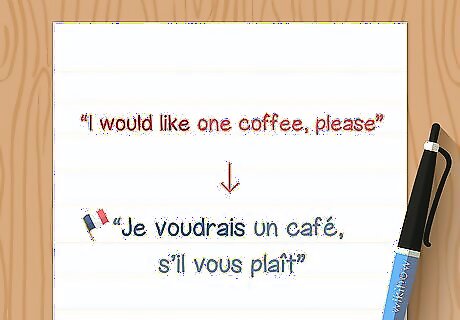
Let the server or barista know what drink you want. After you've said hello, you're ready to order. You can simply state the name of the drink, but it's far more polite to start with je vans prendre (I'll take) or je voudrais (I would like) followed by the name of the drink. For example, you might say "Bonjour. Je voudrais une noisette, s'il vous plaît."
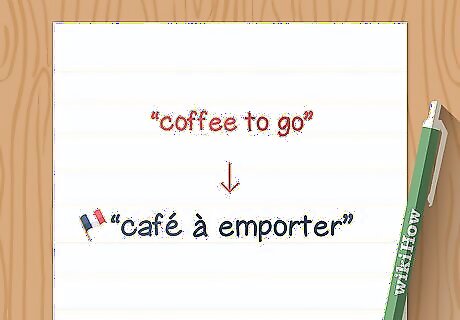
Specify if you want your order "to go." Unlike more casual cafés in the US and elsewhere, the default in a French café is to prepare your drink "for here." If you want your drink in a disposable cup, let the server or barista know that you want your drink à emporter. Keep in mind that the French like to linger in cafés. Your more traditional French cafés may not have a "to go" option available. However, most specialty cafés will have to-go cups available, particularly in areas that get a lot of tourist traffic.

Add s'il vous plaît (please) to the end of your order. It's polite to say "please" after giving your order, rather than simply stating what you want. You may be accustomed to simply making your order without such niceties, but the French are more formal and place a premium on politeness. For example, you might say "Bonjour. Je voudrais un café allongé, s'il vous plaît."Tip: Always use the vous form when addressing a server or barista, as a sign of respect. Avoid using tu, even if they're younger than you. Only use tu if you become a regular and develop a more familiar relationship with them. Even then, wait for them to say you can use tu.
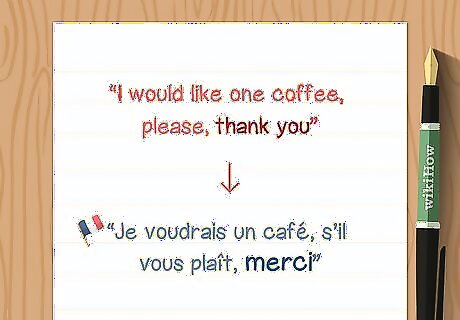
End with merci to be extra polite. The French will never fault you for being overly polite. If you really want to charm and impress your server or barista, add a "thank you" after your "please." It shows that you're grateful and appreciate their service. For example, you might say "Bonjour. Je voudrais un café crème, s'il vous plaît. Merci."
Navigating a French Café

Order at the bar for faster service and lower prices. The French may sit at a café table for hours, whereas if they order at the bar, they're just looking for a quick cup before they head off. Accordingly, you'll typically pay less for your coffee if you order at the bar rather than sitting at a table. If you sit at a table, you may pay as much as 50 percent more for your drink. Tables are serviced by wait staff at most cafés. If you order your coffee at the bar, drink it at the bar. It's considered rude to order your drink at the bar and then go sit at a table.
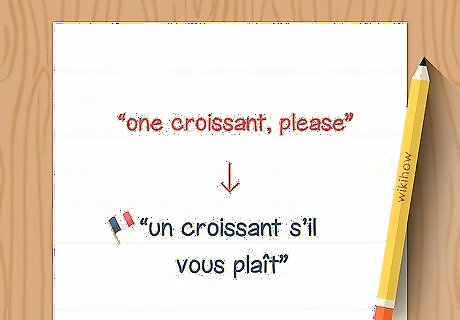
Ask for a croissant in the morning rather than taking one. If you go to a French café in the morning, you'll likely see a basket of croissants prominently displayed on the bar. However, they aren't sitting there for you to just take one (and they aren't free). If you want a croissant with your coffee, gesture to the basket and ask politely. For example, you might say "un croissant s'il vous plaît."

Avoid ordering coffee with meals other than breakfast. Unlike many other cultures, the French don't typically drink coffee with food, except at breakfast. While you can order coffee whenever you want, your server will likely be surprised if you order coffee with lunch or dinner. If you want to do things the French way, eat your lunch or dinner, then go to a café to have your coffee afterward. You should also keep in mind that the French typically only drink coffee with milk at breakfast. If you can't drink black coffee, you can feel free to order a café crème any time you want it – but expect some strange looks.











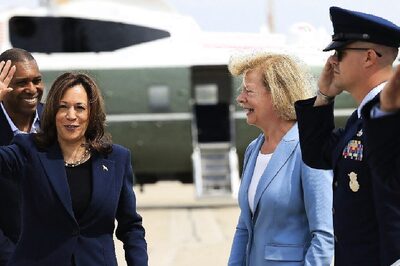

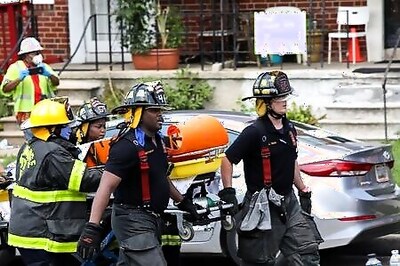
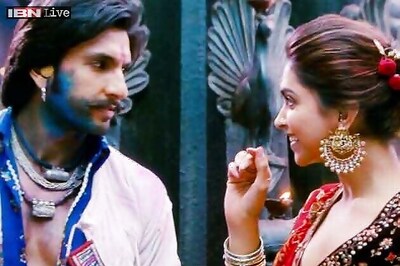

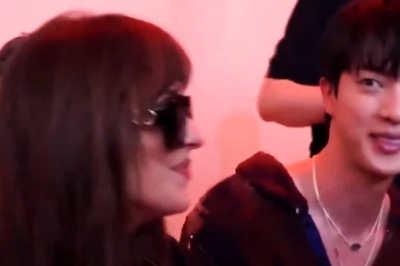
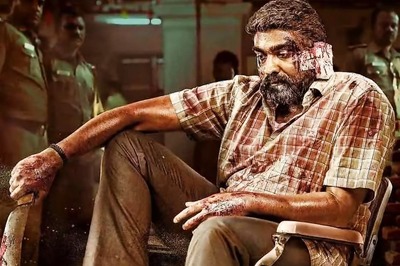
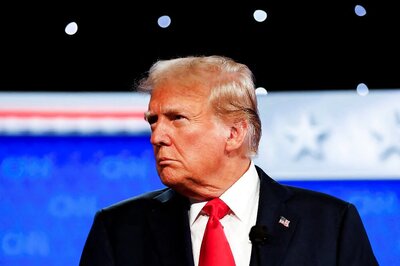

Comments
0 comment